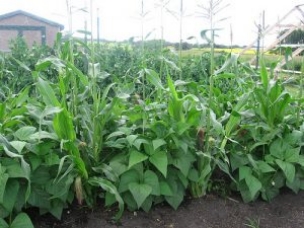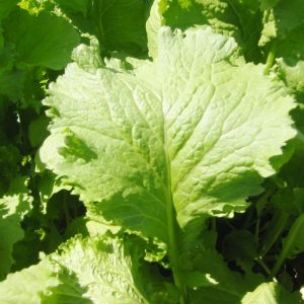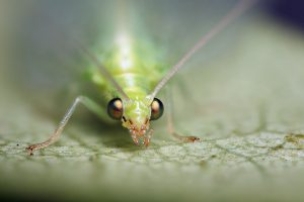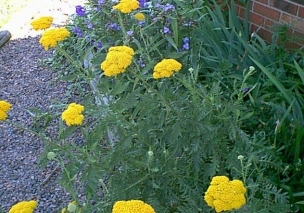From UF/IFAS BLOGS
University of Florida, Extension Alachua County
One secret to “organic” gardening.
Companion Planting
Home gardeners that embark on the “organic” journey often find
themselves wondering about companion planting. They read about growing
organic vegetables, and inevitably come to this subject. Logically, one
starts to think, “Is it okay to plant this in my flower bed, or plant
some of these next to some of those? Will one or more of the plants
interfere or compete with one another? Will one plant provide benefits
to the adjacent plants?” Just receiving simple one word answers doesn’t
really teach us very much. In this post, I’ll attempt to explain some
of the basic science behind companion planting, and the conundrum
between plant companions that repel pests and planting those that
attract beneficial insects.
Growing two or more different plants in the same garden or container
raises a few concerns. Here’s a list of basic topics gardeners need to
consider when companion planting. Symbiotic nitrogen fixation, mutual
climate co-operation, trap cropping, biochemical pest suppression, the
attraction of beneficial insects, and biodiversity. Holy seed starts
Batman, that’s a lot to think about! Let’s begin with how these work
individually.
 |
| Corn companion planted with Beans |
Symbiotic
Nitrogen Fixation
Plants cannot survive without nitrogen. Unfortunately, plants can’t
just breath nitrogen gas which is abundant in our atmoshpere. Instead,
microbiological organisms use the ammonia form of nitrogen to
manufacture the proteins and other nitrogen-containing nutrients needed
to survive. So, what plants can we use to get this task done? Organic
gardeners typically use cover crops as companion plants. Peas, beans
and other legumes fix atmospheric nitrogen using small growths on their
roots called nodules. Those microbes, and the bacteria in your soil,
then act as the plant nitrogen broker. Plants ask the microbes for N,
the microbes go get it from the nodules and bring it back for the plant
in exchange for exudates the plant produces and emits through its
roots. Through this symbiotic practice of nitrogen fixation, you will
spend less money on nitrogen fertilizer.
Mutual
Climate Co-operation
Mutual climate co-operation refers to planting crops that, when they
become full size, complement the needs of plants growing around them. A
good example of this is planting tall, sun-loving plants like corn,
alongside short, shade-tolerant plants, like beans, that will lend a
helping hand to the corn. These combinations will help both plant types
produce better yields, and provide more pest control benefits overall.
Another superior companion plant is Marigolds. Marigold is a sun lover
but will enjoy the shade provided by other garden plants as they get
older. Dappled sunlight will extend your Marigold’s flowering cycle.
The scent and exudates of those flowers is what keeps bugs away from
your eggplants or peppers. A little more on Marigolds later.
 |
| Southern Giant Curled mustard |
Trap Cropping
Trap cropping refers to the planting of a specific plant. It’s a decoy
plant. The goal is to attract pests away from your feature crop. What I
call ‘Double Trap’ crops, are those that attract bugs away, plus
prevent those bugs from reproducing. For example, Southern Giant Curled
Mustard, when planted around a garden perimeter, makes for an effective
trap crop in controlling pierce-sucking insects that feed on the
leaves. These insects generally leave blotches and holes in leaves.
Sound familiar? The mustard plant gets male insects to release
pheromones which attract other like kind bugs. In addition, this
mustard produces a type of enzyme called homing endonuclease, that can
render pierce suckers sterile.
Biochemical
Pest Suppression
Some plants exude chemicals that can protect neighboring plants. For
example, marigolds release thiopene, an aerial pest suppression that
helps to repel many insects and nematodes. Nasturtiums have been shown
to have larvacidal effects on leafminers. In addition, some plants emit
pheromones that confuse male insects, causing them not to mate. Another
form of biochemical suppression is a phenomenon called allelopathy.
Allelopathy is the release of chemicals from the root system to
discourage insects. Voodoo Lily can produce allelopathic chemicals that
deter fungus gnats. These chemicals can have a positive or negative
influence on surrounding plants. Those that have a negative influence
can be an important part of another plants’ defense, reproduction and
growth systems.
 |
| Adult Green Lacewing |
Attracting
Beneficial Insects
Planting neighboring plants to attract good bugs is traced all the way
back to ancient Egypt. This strategy is used when the main plant lacks
the ability to attract the good guys on its own. To determine what type
of beneficial insects you want to attract, get an idea of what pest
insects you are likely to encounter. My personal favorite to attract
and keep around is the green lacewing. The lacewing larvae resembles an
alligator and they attack and eat everything you want them to. There is
a long list of good predators and an equally long list of plants they
are attracted to. I promise you’ll always find fern yarrow, dill,
coriander (cilantro), and mint planted around my garden. There is a
subtle balance however, between the number of companions that are
repellants and those that are beneficial attractants. This leads us
right into biodiversity.
Biodiversity
Many insects and disease organisms prefer specific plant species. For
example, horn worms love tomatoes so much that they are commonly called
tomato worms. Cabbage loopers love to chow down on not only cabbage,
but also broccoli, brussel sprouts, cauliflower, collards, and kale.
Now think about how the hornworm views a monocrop field of tomatoes, or
looper moths see a monocropping of any of the vegetables mentioned.
It’s an all you can eat buffet with 100% of your absolute favorite
foods. It is imperative to mix up not only your crop types, but also
your repellants and attractors. You reduce the likelihood of a massive
infestation by creating a balance of plants that will keep the bad guys
away and keep the good guys around.
 |
| Fern Yarrow planted on a border |
Let me give you a specific example that you can put to use right away.
This example targets all too common garden pests, like spider mites. I
prefer to use repellant plants you can eat. Aditionally, consider at
least 4 attractants. As an example, I enjoy eating coriander
(cilantro), thyme, fennel and dill which are both repellants and
attractants. Then I mix in angelica, tansy, chrysanthemums, marigolds
and fern yarrow here and there around the garden.
I’m barely scratching the surface of this subject. To learn more about
Organic Gardenng, this EDIS link is a good place to begin:
http://edis.ifas.ufl.edu/topic_organic_gardening
References:
1. Mayer, Daniel (2010) “The complete guide to companion planting.
Everything you need to know to make your garden successful”. Atlantic
Publishing Group ISBN-10: 16202300382.
2. Landon, Amanda J. (2008). “The “How” of the Three Sisters: The
Origins of Agriculture in Mesoamerica and the Human Niche”. Nebraska
Anthropologist. Lincoln, NE: University of Nebraska-Lincoln: 110–124.
3. Pleasant, J. (2006). “The science behind the Three Sisters mound
system: An agronomic assessment of an indigenous agricultural system in
the northeast”. In Staller, J. E.; et al. Histories of maize:
Multidisciplinary approaches to the prehistory, linguistics,
biogeography, domestication, and evolution of maize. Amsterdam. pp.
529–537
4. Holden, Matthew H.; Ellner, Stephen P.; Lee, Doo-Hyung; Nyrop, Jan
P.; Sanderson, John P. (2012). “Designing an effective trap cropping
strategy: the effects of attraction, retention and plant spatial
distribution”. Journal of Applied Ecology. 49 (3): 715–722.
doi:10.1111/j.1365-2664.2012.02137.x. ISSN 1365-2664
5. “Pacific Northwest Nursery IPM. Flowers, Sweets and a Nice Place to
Stay: Courting Beneficials to Your Nursery”. Oregon State University.
February 2013
6. Dan Pearlman, Glenn Adelson, (1997) “Biodiversity exploring values
and priorities in conservation” Blackwell Science Press
7. Horticulture Research International, Wellesbourne : “Insects can see
clearly now the weeds have gone”. Finch, S. & Collier, R. H.
(2003). Biologist, 50 (3), 132-135
8. “The Self-Sufficient Gardener Podcast–Episode 24 Companion Planting
and Crop Rotation”. 2010.
9. Pleasant, Barbara (June–July 2011). “Organic pest control what
works, what doesn’t”. Mother Earth News (246): 36-41.
by Scott Schuppie
UF/IFAS Extension Master Gardener
Companion Planting Chart, Vegetable and Herb, University of Florida pdf
|
|



